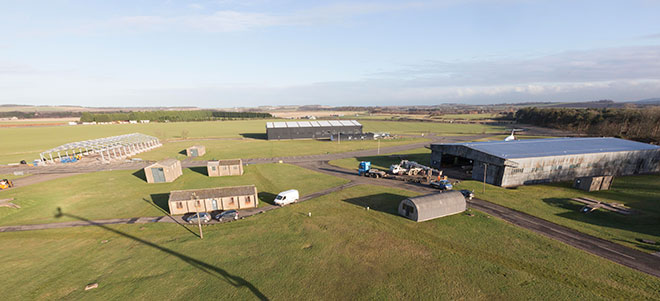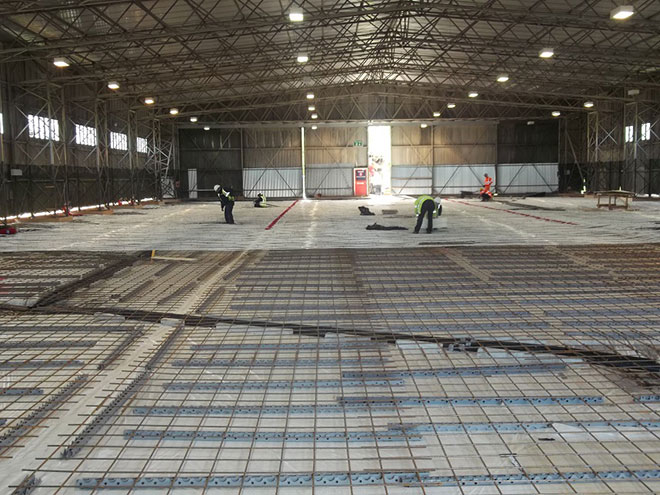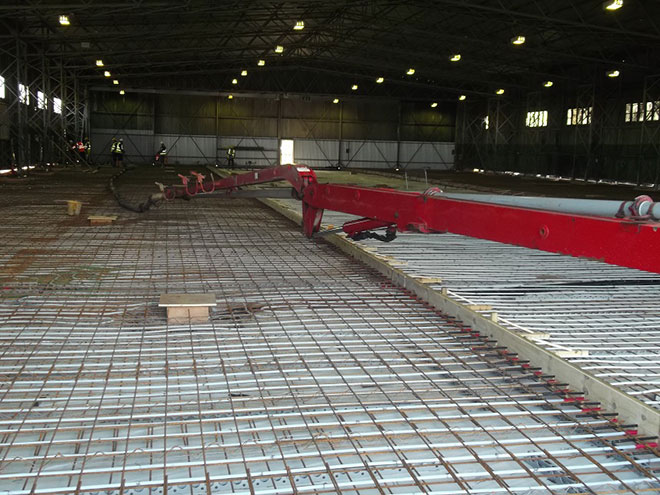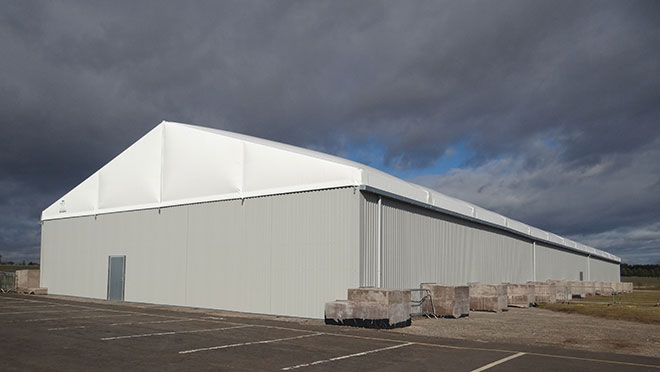Over 70 years old and measuring over 1,750 square metres each, the aircraft hangars at the National Museum of Flight have never been heated. But that’s all set to change, because as part of the current redevelopment of the hangars, an innovative, eco-friendly heating system is being installed.
Built in 1940–41 during the Second World War, the hangars were originally designed to last just a few years. Over 70 years later they are part of the East Fortune Airfield Scheduled Monument, and provide an important link to Scotland’s wartime history and aviation story.

A major part of the redevelopment focuses on creating exciting new displays in the hangars that tell the stories of the aircraft and the people that flew in them. But displaying the uniforms, documents, photographs, film and interactives required to help tell these stories is only possible if the hangars are adequately heated. And heating spaces this vast is no mean feat.
Recent visitors to the Museum could be forgiven for thinking that the site has been attacked by a pack of giant moles. But the holes dug systematically around the grounds are all part of a project to install ground source heat pumps, which will heat the hangars via approximately 7,500 metres of underfloor pipework per hangar. These pumps will source their heat energy from the ground through over 40 boreholes, which range from 100-180m deep – so deep that we’ve actually unearthed volcanic deposits while digging!


A central plant room will house the heat pumps and deliver the renewable heat to the hangars via a network of highly insulated pipes.
Heat pumps use solar heat energy stored in the ground, water and air. This is renewable and totally free! Inside the heat pumps is a refrigerant, which is heated using energy from the boreholes until it evaporates, changing from liquid to gas. It is then pumped to the compressor, where it is pressurised to increase the temperature. The refrigerant has a very low boiling point, so requires little heat, evaporating at just 2°C.
Once through the compressor, the now hot refrigerant gas passes into a heat exchanger called the condenser, where it transfers its heat into water, which is then ready to be distributed around the building’s heating system, or can be used to heat tap water. Having delivered its heat energy in the condenser, the refrigerant is cooler. It then passes through an expansion valve, where it loses its pressure and cools further, returning to a liquid state, ready to begin the cycle again.
The amount of electricity used to run the compressor and circulation pumps inside the heat pumps is equivalent to boiling a kettle for ten minutes a day, making this an incredibly cheap and efficient way to heat the huge interiors of the hangars.


The National Museum of Flight remains open while the redevelopment work is going on. You can read more about the hangar redevelopment here, and find out more about how the pumps work at the Ecoliving website.
